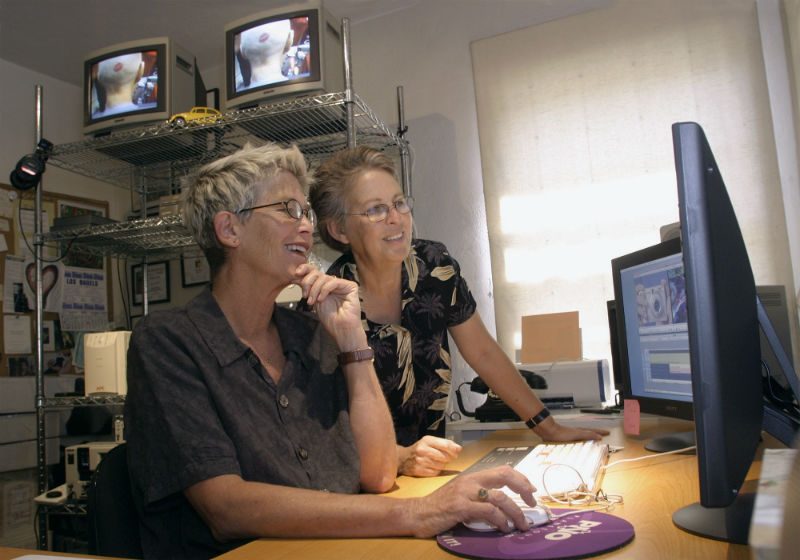On stage at the awards ceremony, I called Ruth my partner in life and business, and that got applause.”
In [part one], Pam Walton talked to LLL about her award for her latest film, Triptych: 3 Women Making Art. Here, Walton looks forward to her next project, and discusses how aging has broadened her perspective.
How has lesbian identity affected your choice of subject matter or treatment of that subject matter?
Next on my list of films is Fountaingrove Lodge, the gay/lesbian retirement home in Santa Rosa, California. It’s a continuing care retirement community, primarily for gay/lesbian seniors.
We’re excited about making a film about it – it’s a good topic, it’s of current interest, and it feels good to get back into the gay politics a bit. The last film about women artists (Triptych) was more of a personal project, just because I thought it was interesting. But this next film is more about gay politics; what are gay/lesbian seniors doing now that they’re getting older? What’s the advantage of having a retirement center that is gay instead of just straight and gay? I’ll be focusing on both men and women. There are more men than women at Fountaingrove, and that’s because it’s very expensive, and gay men usually have more money than gay women.
How has lesbian identity affected your treatment of your subjects?
When I was in Stanford’s documentary program in 1985, I was in the process of coming out myself. I’d been to a lot of gay/lesbian film festivals but since I’m a middle class, suburban girl, I never saw myself in these movies. The ones I saw were more the rougher side of being lesbian: city women, S/M women, motorcycle dykes – maybe because those subjects were more entertaining to the gay audience. So I decided to make a film about lesbians in my world – I made Out in Suburbia. It had a white-washed suburban look, and we got in trouble with some critics. But I wanted people to see another view of lesbians, that we’re not just in the city and not just rural – we’re out in the suburbs, too.
You’re a long-lived lesbian. How has getting older affected your filmmaking?
Last night at the awards ceremony, the audience got to see me come up on stage and call Ruth my partner in life and business, and that got applause. Also in Triptych, people who watch the film get to see a lesbian artist who talks about her lover and the art she’s done about her.
I remember in the beginning of my career, when I did Out in Suburbia and Gay Youth, I was attacked by some critics in the gay community who said I was trying to whitewash our community, making it look white and middle-class. Even though one of our characters was about a girl taking her lover to the prom, it got attacked for being too “assimilationist.” But now, it’s wonderful that we can see LGBT people almost everywhere and even casually on television and in films — without their gayness being a big deal.
